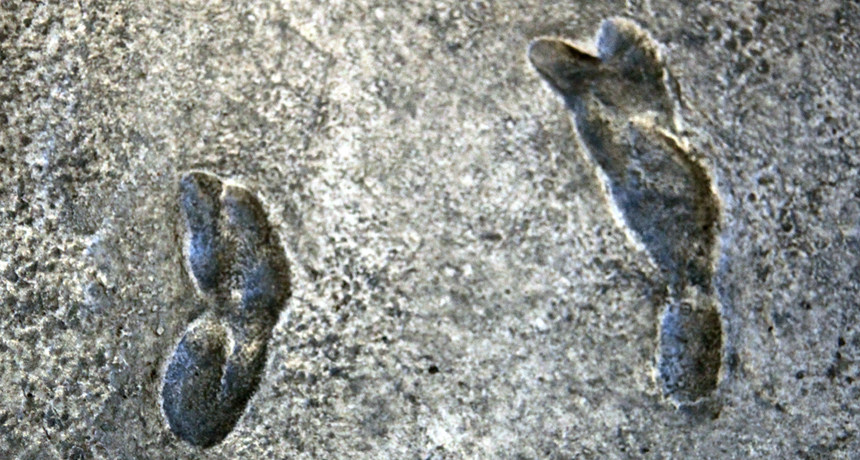Laetoli footprints show signs of unusual gait
Contrary to prior study, Tanzanian hominids did not walk like humans

WALK IT BACK A new analysis of 3.6-million-year-old footprints excavated in 1978 at Laetoli, Tanzania, challenges the argument that early hominids strode in much the same manner as people today do. Shown is a cast of two of the 70 footprints.
Tim Evanson







